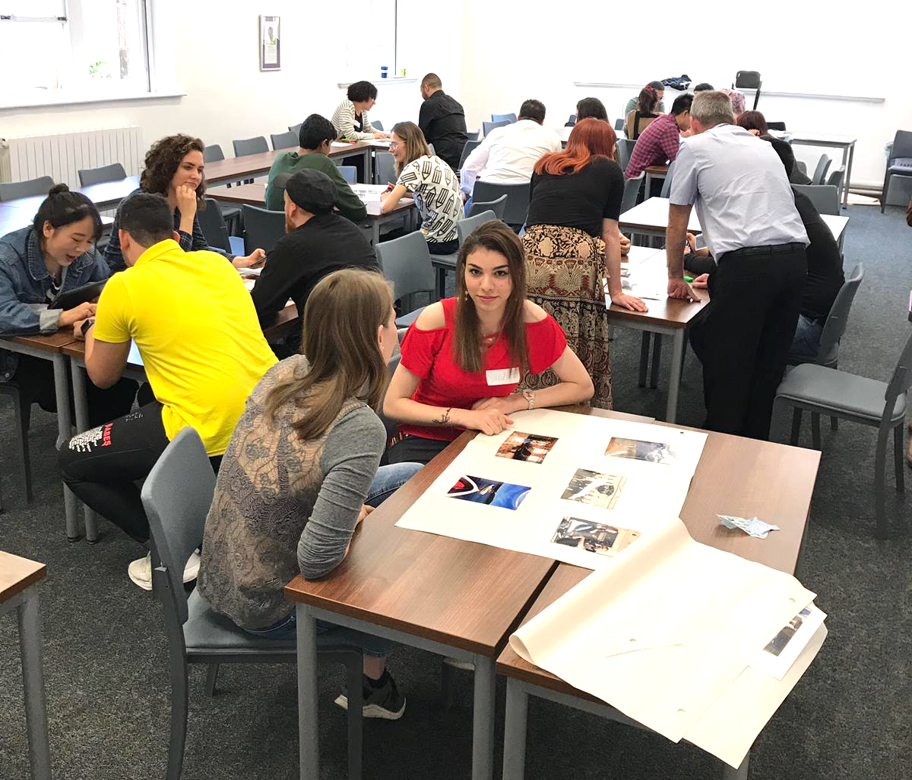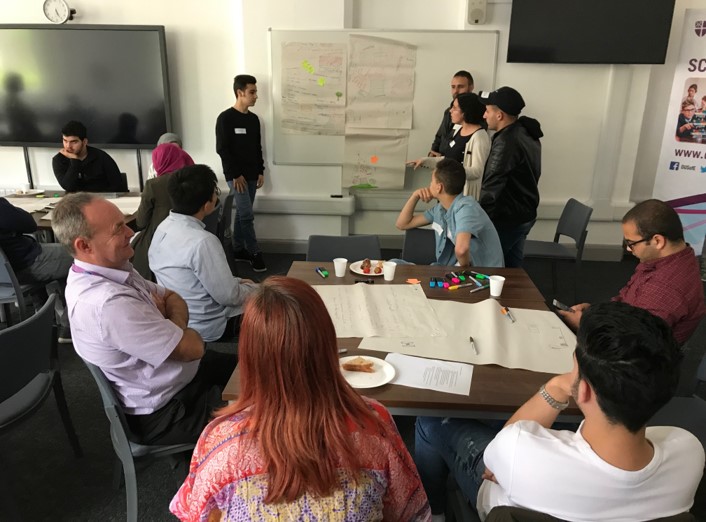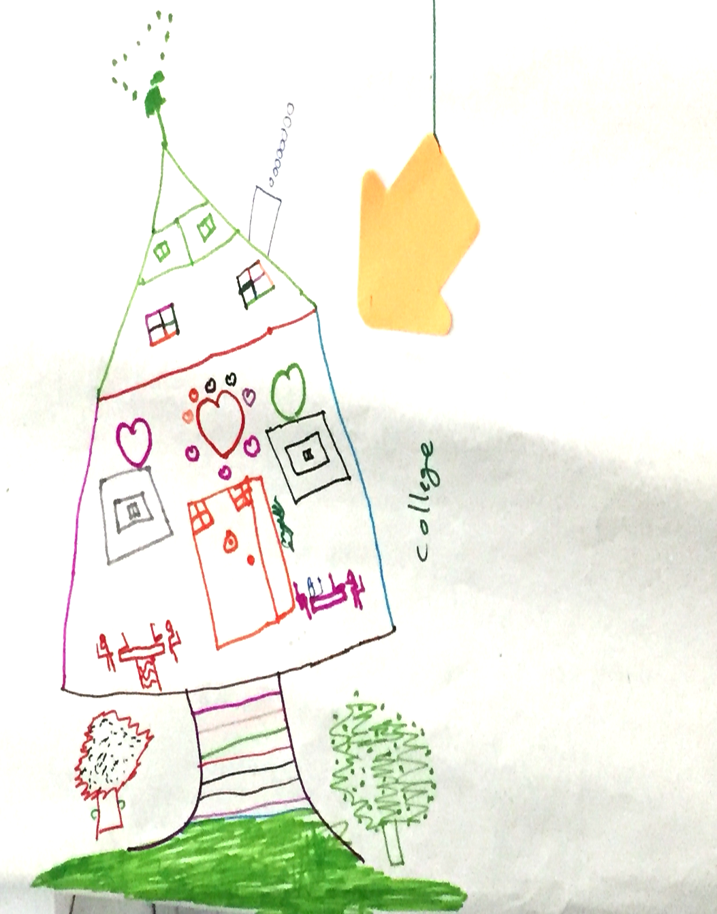Case study at Durham
Case study at Durham

Building bridges through intercultural dialogue: Life narratives of educational experiences
Prue Holmes, Marta Moskal and Taha Rajab
Case study objectives
Organised around the theme of inclusion and intercultural dialogue.The aim of the three workshops was to facilitate the meeting of students from Durham University with refugee youths of Syrian and Iraqi background who have recently moved to the Durham area. The focus of the workshops was on building bridges, sharing life narratives and educational experiences between Durham students and young people through:
-photo exposes,
-learning a song together,
-taking a walking tour of Durham University campus,
-Co-creating an ideal university.

Participants and data
Durham students – 18
Young people – 18
Facilitators – 5
Experiences shared through small group discussions between the students and young people, reflections, and our own observations. All the discussions are audio-recorded. We also encouraged all the participants in the workshops to complete the feedback questionnaire (reflections on their experiences and impressions of participating in the workshop).

Workshop 1: Making connections
Ice breaker – Marshmallow and pasta building activity.Photography exchange – Learning about ourselves and others.Sharing songs (in different languages).
Small group discussions.
What did I enjoy? What did I learn?
Workshop 2 – Introducing the university

A walking tour of the campus – encouraging students/young people to share their understandings of the university as a learning space.
A shared meal/sharing Eid
Post-it notes session
What did I enjoy?
What did I learn?
Workshop 3 – My education experiences

The purpose of this workshop is to continue to dialogue and share educational experiences.
Co-creating your “ideal” university – art activity in small groups.
Post-it notes session.
A reflection about their understanding of young people being excluded from education.
Constructing My (Ideal/ Dream) University
1) Participants in group discussed what their dream university would be and considered the following:
-What would the place look like, What kind of facilities will be included?
-How would different types of learners be engaged in university?
-How would all students be challenged and be prepared for the world of work?
-What would students and teachers interactions look like?
-What would the culture/ language be like?
-What beliefs and attitude would be prevalent/ mainstream?
-What kinds of activities, schedules would be in the university?
-What else would you need to consider in creating your ideal university?
2) After coming up with ideas, groups chose one goal from their dream university and brainstorm ways to achieve that goal.
3) Groups shared their dream university with larger group and answer the following questions:
-How does your dream university differ from your current or previous -learning place?
-What would need to change to create your ideal university?
-What can you do to help make that happen?
Conclusions and theoretical points for development
- Critical pedagogies supporting human capabilities (Nussbaum/Sen)—engaging the excluded, disadvantaged, marginalised (in HE).
- Becoming an intercultural speaker/mediator (Byram, 2008) through the creative arts (Frimberger)
- Intersubjective and symbolic nature of identity construction that occurs in intercultural communication (Kramsch, 2012), and the power relations that both promote and hinder intercultural dialogue (Holmes, 2014; Moskal & North, 2017)
- Young people as participants in society—taking action and responsibility (Guilherme)
- Translanguaging (Li Wei) and the ecological classroom (Van Lier)
